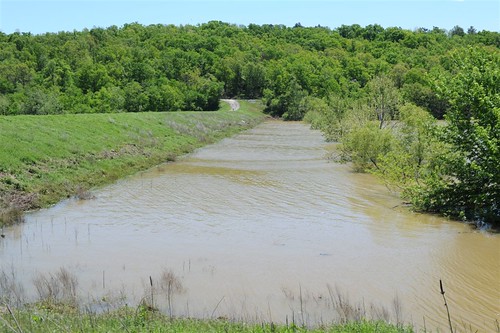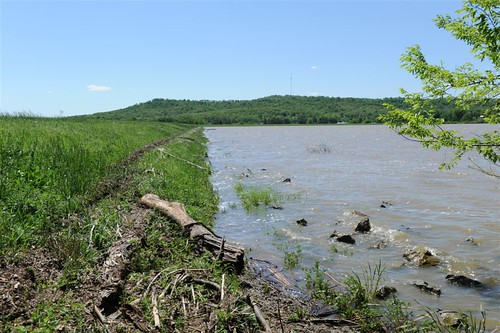
The flooding from this year’s spring rain storms caused millions of dollars worth of damage to homes, businesses and crops in Arkansas.
But some flooding was reduced or minimized, thanks to 207 small and medium-sized dams built by USDA’s Natural Resources Conservation Service (NRCS), in partnership with local watershed districts.
These earthen dams provide an average annual benefit of $30.3 million from the reduction in flooding and the associated economic impact and property damage. In years like this one, with significant flooding averted, their value is much higher.
In 1960, NRCS (then the Soil Conservation Service) along with the Washington County Soil Conservation District, city of Lincoln and Arkansas Game and Fish Commission, developed a watershed protection and flood prevention work plan for the Muddy Fork of Illinois River Watershed to address persistent flooding. Between 1962 and 1975, four dams were constructed in this watershed.
Let’s look at two of them. These two dams are situated upstream of Prairie Grove, creating the Budd Kidd and Prairie Grove Reservoirs. They help to reduce flooding of Muddy Fork Creek along the western edge of Prairie Grove, and together they provide about 3,700 acre-feet of floodwater storage.

NRCS has estimated that during a 100-year flood (a level of flooding expected to happen, on average, about every 100 years), the peak water level on Muddy Fork Creek, where it passes by Prairie Grove, would be reduced by about 2 feet as a result of the dams’ ability to store and more slowly release flood waters over several days.
Budd Kidd Reservoir also provides recreational opportunities for hunters and fishermen, and Prairie Grove Reservoir is an essential source of drinking water for Prairie Grove.
Both Budd Kidd Dam and Prairie Grove Dam were originally designed as “low hazard” dams because of the absence of downstream development—when they were built, dam failure would probably not have led to loss of life or significant economic damage. But over the years, increased development downstream has created increased risks. Consequently, both dams are currently rated as “high hazard” by NRCS and the state of Arkansas. This rating mandates that the dams be able to store water during a larger flood event.
The dams will need to be modernized in the near future, but in the meantime, they continue to do their job and protect Arkansas communities—as we saw earlier this year.
Check out more conservation stories on the USDA blog.
Follow NRCS on Twitter.


